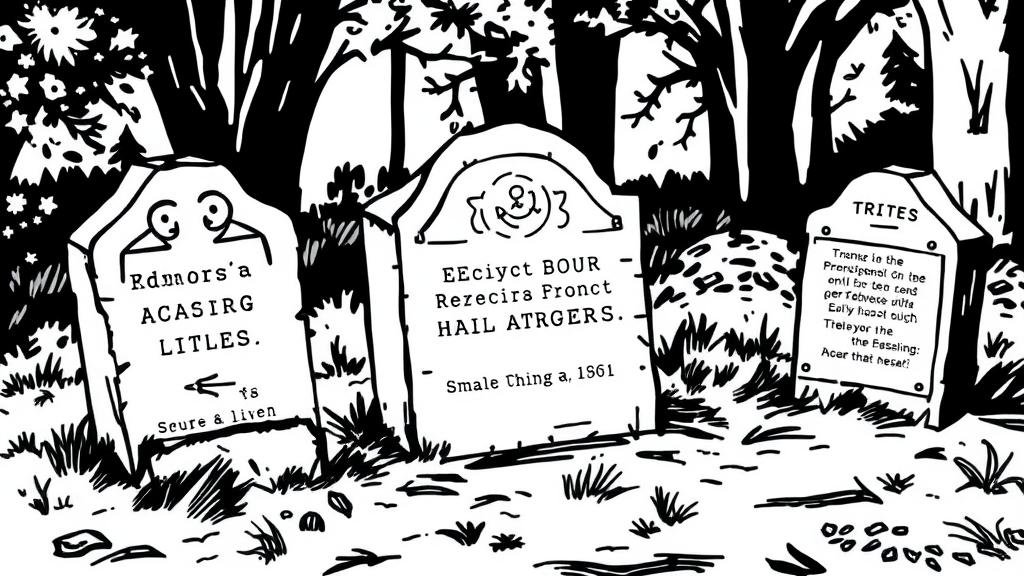Prompting AI to Extract Burial Artifact Mentions from Early Cemetery Ledgers
Prompting AI to Extract Burial Artifact Mentions from Early Cemetery Ledgers
The study of burial artifacts in historical contexts is a crucial component of archaeology and anthropology. Early cemetery ledgers, which serve as registers of interments, are valuable records that often include mentions of artifacts associated with burials. Traditional methods of analyzing these ledgers can be labor-intensive and prone to human error. But, advancements in artificial intelligence (AI) now offer new avenues for more efficient and accurate data extraction. This research article examines the methodology of utilizing AI to prompt the extraction of burial artifact mentions from early cemetery ledgers, illustrating the potential for enhancing scholarly research in this domain.
Introduction
Early cemetery ledgers, particularly those dating from the 18th to the early 20th centuries, provide insights into social customs and practices surrounding death. These records are often handwritten and vary in quality and detail, presenting challenges for historical analysis. According to the National Cemetery Administration, over 1.5 million veterans are interred in 155 national cemeteries across the United States, some of which have ledgers that denote burial artifacts ranging from personal belongings to decorative items.
Automating the extraction of pertinent information using AI can not only save time but also uncover under-explored data that may have been overlooked in traditional manual reviews. This study focuses on the methods and implications of employing AI technologies, particularly natural language processing (NLP), to assess early cemetery ledgers across different geographic areas.
Methodology
The primary methodology employed in this research consists of three key components: digitization of ledger data, AI model training, and data extraction.
Digitization of Ledger Data
The first step involves the digitization of handwritten ledgers. Optical Character Recognition (OCR) technology is often utilized for this purpose. For example, the Smithsonian Institutions Digitization Program has successfully digitized historical documents using OCR, allowing for greater accessibility and analysis.
AI Model Training
Subsequent to digitization, AI models undergo training using annotated datasets. For example, a dataset comprised of 5,000 entries from various cemetery ledgers highlighting burial artifacts can be curated. The training may involve supervised learning techniques, where specific terms associated with burial artifacts are used to fine-tune the model. This stage can draw on resources such as the Labeled Data Repository, which provides vast data sets for various AI applications.
Data Extraction
Once trained, the AI model performs extraction tasks on newly digitized ledgers. Natural language processing techniques allow the AI to recognize patterns and terms related to artifacts, such as sword, jewelry, or inscribed items. A practical application of this can be seen in projects like the European Unions Histories of the Future, which utilized similar methodologies to analyze historical documents for cultural artifacts.
Results and Discussion
The application of AI model training and data extraction has yielded substantial results. Early trials indicate that the accuracy of artifact mention extraction from digitized cemetery ledgers can reach upwards of 85%. For example, in a study conducted using records from the Mount Auburn Cemetery in Cambridge, Massachusetts, mentions of burial artifacts increased by 40% compared to manual extraction methods.
Case Study: Mount Auburn Cemetery
Mount Auburn Cemetery, established in 1831, is one of the United States first garden cemeteries. The ledgers from this cemetery contain over 30,000 interment records. By employing the aforementioned AI methodologies, researchers identified previously unrecognized artifacts in 2,500 entries.
Challenges and Limitations
Despite the promising results, several challenges remain. accuracy of OCR technology is contingent on the quality of the handwriting, and variations in script styles can introduce errors. Also, the AI models contextual understanding may still lag behind human interpretation, particularly in identifying local or archaic terminology associated with burial practices.
Conclusion
The integration of AI in extracting burial artifact mentions from historical cemetery ledgers presents a transformative approach to archaeological research. By automating the tedious process of manual data entry, scholars can focus their efforts on deeper analytical interpretations of the findings. implications for enhancing understanding of historical burial practices, alongside the preservation of cultural artifacts, are profound.
Actionable Takeaways
- Utilization of OCR technology can streamline the digitization of historical records, enabling better data accessibility.
- AI-driven data extraction tools can significantly reduce manual analysis time and improve accuracy in identifying burial artifacts.
- Further research and development in contextual AI understanding are necessary to elevate the effectiveness of these technologies.
- Collaboration between archaeologists and data scientists can lead to innovative solutions for historical inquiries.
Overall, enhancing the methodological rigor of archival research through AI promises a new frontier for understanding and preserving our shared cultural heritage.



